Thai Basil Pesto
This Thai Basil Pesto recipe was inspired by the fact that I had an abundance of leftover Thai basil and lime after eating pho. Instead of letting those aromatic herbs go to waste, you can create a pesto that’s bursting with flavor and incredibly versatile. Trust me, this recipe is a game-changer, and you won’t believe how easy it is to whip up this vibrant, fragrant pesto.

Thai basil has a distinct flavor characterized by its intense, slightly spicy, anise-like taste with hints of clove and licorice. When combined with garlic, lime juice, olive oil, pine nuts, Parmesan cheese, and seasoned with salt and pepper, the resulting Thai basil pesto boasts a robust herbaceous profile with a citrusy zing, complemented by nutty undertones and a savory, well-rounded finish.
Why you’ll love this recipe
Unique Flavor Profile: Thai basil pesto offers a distinctive taste that sets it apart from traditional basil pesto. If you enjoy bold and exotic tastes, the combination of Thai basil, zesty lime, and aromatics creates a complex and exciting flavor profile.
Versatile: Thai basil pesto is incredibly versatile and can be used in various dishes, from pasta to sandwiches, salads, and more. Its adaptability allows it to enhance a wide range of meals, making it a handy condiment in the kitchen.
Customizable: Since it’s homemade, this Thai basil pesto recipe can be easily customized to suit individual tastes. Whether you prefer it spicier, sweeter, or more citrusy, you have the flexibility to adjust the recipe to your liking.
Great way to use leftovers: Using leftover Thai basil to create this pesto is a brilliant way to prevent waste while transforming those aromatic herbs into a versatile and flavorful condiment. It not only extends the life of the herbs but also opens the door to a world of delicious culinary possibilities.
Ingredients

- Thai Basil: You’ll need about 2 cups (or two large handfuls) of Thai basil leaves plucked from the stem. Thai basil can be found at your local Asian grocery store.
- Garlic: use 1-2 cloves. Garlic can help balance the flavors in pesto. Its slightly spicy and aromatic qualities offset the richness of the ingredients. Garlic has natural preservative properties due to its antimicrobial and antioxidant attributes.
- Lime or Lemon Juice: Lime or lemon juice adds a bright, citrusy element to the pesto. This zesty note can help balance the richness of the other ingredients. The acid can also help preserve the color and freshness of the pesto.
- Extra-Virgin Olive Oil: This is the most traditional and widely used oil in pesto. It has a rich, fruity flavor that complements the other ingredients in the pesto. You can also use grapeseed oil, canola oil, sunflower oil, walnut oil, avocado oil, or peanut oil. Sesame oil can even be used for this pesto to add an Asian twist. It imparts a robust, nutty, and slightly smoky flavor.
- Pine Nuts or Walnuts: Pine nuts and walnuts are commonly used in pesto recipes for their rich and nutty flavor, which adds depth and creaminess to the sauce. Toasting these nuts intensifies their flavor, releases essential oils, and enhances their natural sweetness. The toasting process also provides a slightly crunchy texture that complements the overall creaminess of the pesto.
- Parmesan Cheese (Optional): Parmesan cheese is added to pesto to provide a salty and savory component that complements the basil and enhances the overall depth of flavor, but it can be optional if you’re seeking a dairy-free or vegan version of the sauce.
- Salt and Pepper: Used to flavor the pesto. It is best to add a little and then do a final taste test at the end when all the ingredients are blended together.
Please scroll ⬇️ to the recipe card to see the full ingredient amounts and instructions.
How to make it
Step 1: Chop the pine nuts. In a food processor, combine the pine nuts, lemon juice, garlic, salt, and pepper and pulse until well chopped.


Step 2: Add the Thai basil and Parmesan cheese. Add the Thai basil and pulse several times more. Scrape down the sides of the food processor with a rubber spatula. Add the parmesan cheese and pulse.

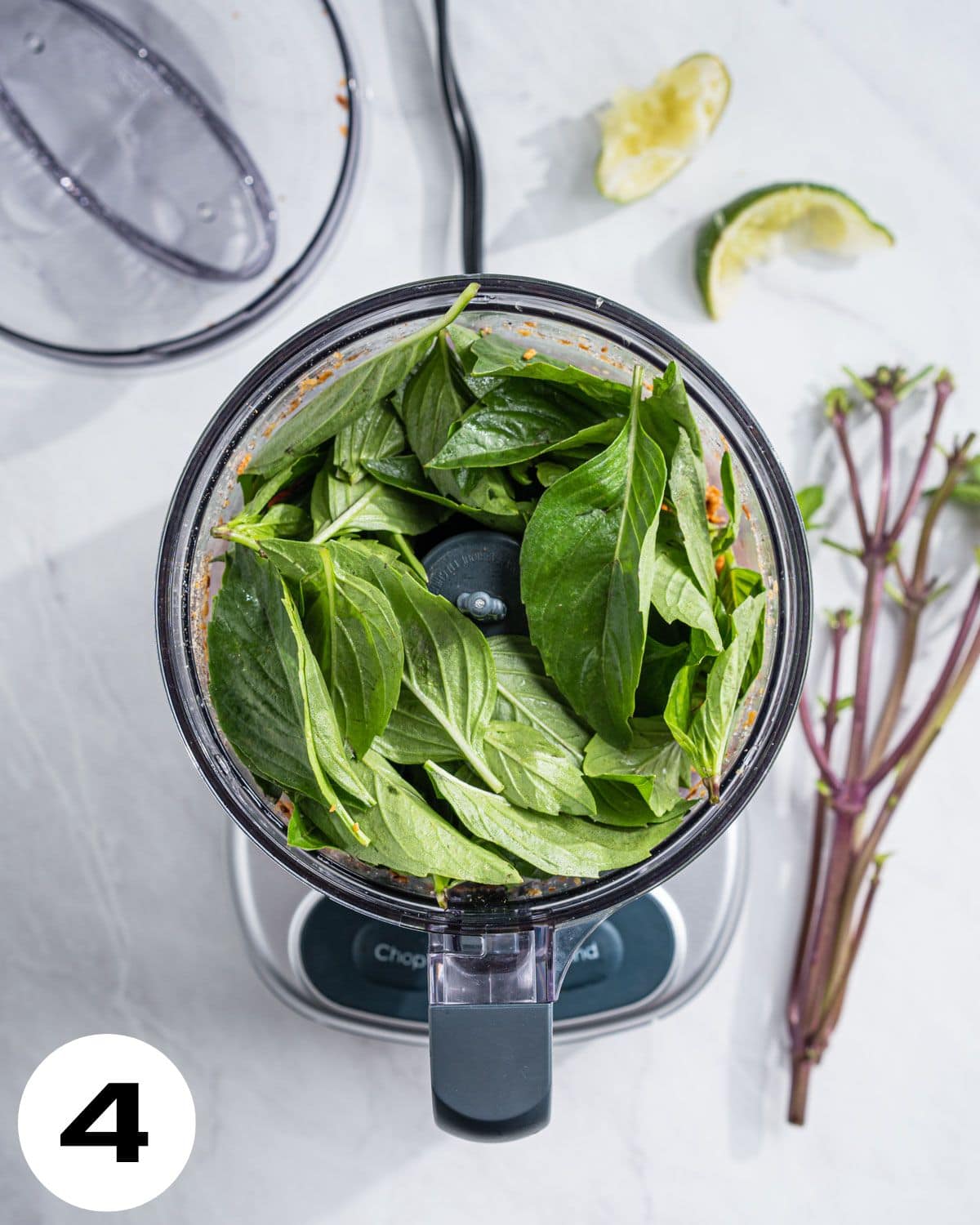


Step 3: Slowly pour in the olive oil. With the food processor running, drizzle in the olive oil and pulse until combined. Adding the olive oil slowly while the processor is running will help it emulsify and help keep the olive oil from separating.
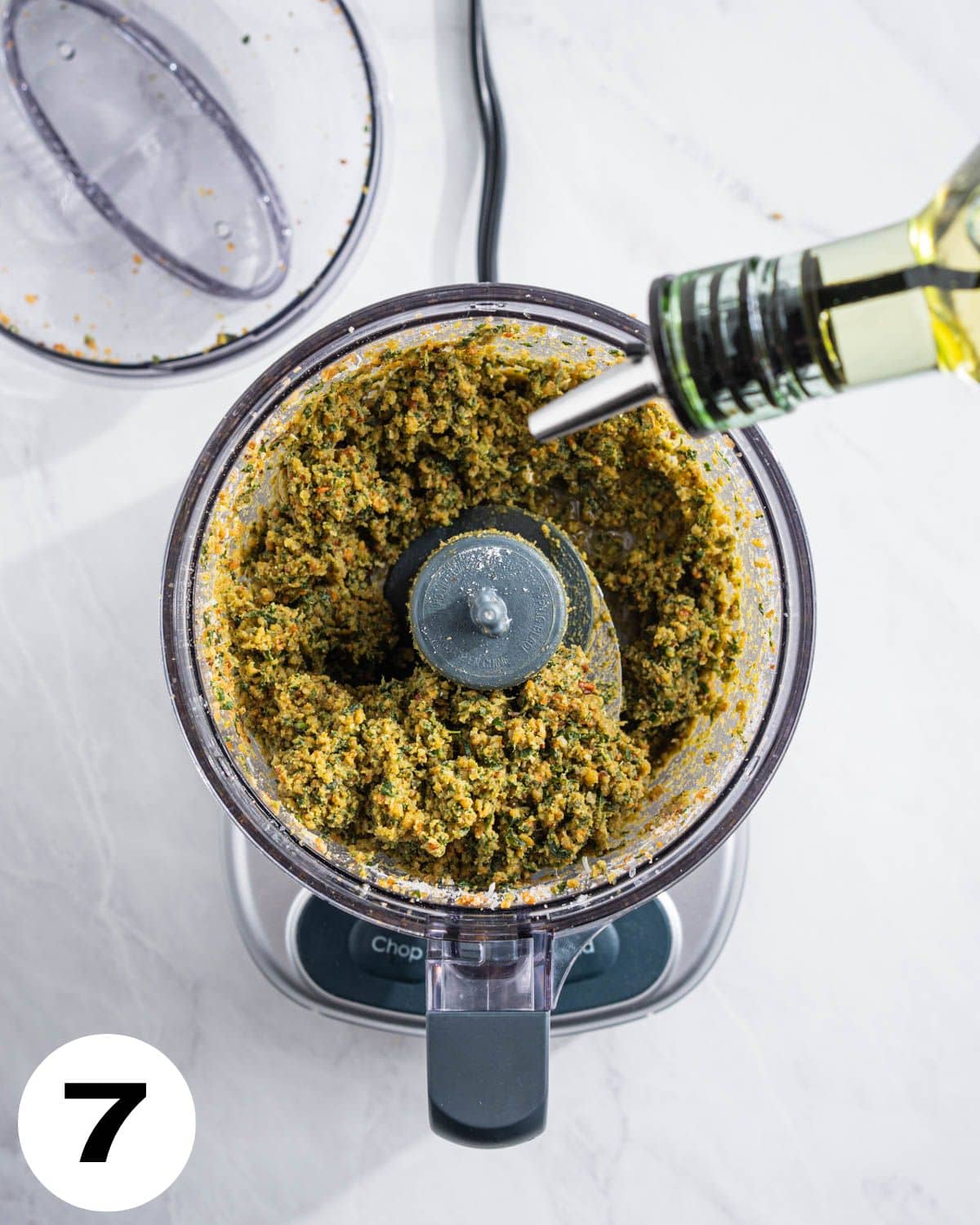

Step 4: Season the pesto sauce. Add salt and freshly ground black pepper to taste.
How to Use Thai Basil Pesto
Thai basil pesto is a wonderfully versatile and flavorful condiment that can be used in a variety of dishes to add a unique and aromatic twist. Take a look at all the ways you can use it:

- Pasta Sauce: Toss cooked pasta with Thai basil pesto for a vibrant and zesty alternative to traditional basil pesto. It pairs wonderfully with linguine, spaghetti, or even rice noodles.
- Pizza Topping: Use it as a pizza sauce, either as the base layer or drizzled on top of your favorite pizza. It combines beautifully with a variety of toppings, from grilled chicken to fresh vegetables.
- Sandwich Spread: Spread it on sandwiches and wraps for a burst of flavor. It’s especially delightful with grilled chicken, turkey, or roast vegetables.
- Grilled Proteins: Marinate or brush Thai basil pesto onto grilled chicken, shrimp, or tofu for a delicious twist. It’s a fantastic way to add extra flavor to your BBQ dishes. This persillade also goes really well with meats and seafood.
- Stir-Fries: Stir a spoonful of pesto into your stir-fry dishes to infuse them with Thai flavors. It pairs well with vegetables, tofu, and various proteins.
- Salad Dressing: Use it as a base for a unique and aromatic salad dressing. Mix it with some olive oil and vinegar or citrus juice for a delightful dressing.
- Grain Bowl Topping: Drizzle Thai basil pesto over grain bowls, like quinoa or rice, for an instant flavor boost. Top with your choice of proteins and vegetables for a well-balanced meal.
- Roasted Vegetables: Toss roasted vegetables in pesto after they come out of the oven. The heat will help the pesto infuse the veggies with a rich flavor.
- Burgers: Spread pesto on burgers or mix it into the meat for a burst of flavor. It’s an excellent alternative to traditional condiments.
- Egg Dishes: Enhance your omelets, frittatas, or scrambled eggs with a dollop of Thai basil pesto for a unique breakfast experience.
How to store leftovers
To store leftover Thai basil pesto and keep it fresh for future use, scoop the pesto into an airtight container. A glass or plastic container with a tight-fitting lid works well.
Pour a thin layer of olive oil over the surface of the pesto. This helps create a barrier that prevents air from reaching the pesto and preserves its vibrant green color.
Close the container securely to create an airtight seal, preventing any contact with air.

Refrigerate
Store the container in the refrigerator. The cold temperature will help prolong the pesto’s freshness. It can last for up to one to two weeks in the fridge.
Avoid Freezing
While some pestos can be frozen, traditional pesto with cheese may not freeze well due to changes in texture. It’s recommended to refrigerate rather than freeze.
Remember that the olive oil layer on top of the pesto may solidify in the refrigerator. This is normal, and it will turn back to its liquid state when brought to room temperature. Before using the stored pesto, give it a good stir to recombine the ingredients.

RECIPE
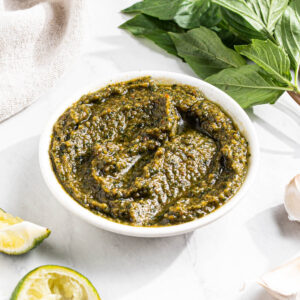
Thai Basil Pesto
Equipment
- Food Processor
Ingredients
- 2 cups Thai basil
- 1 clove garlic, minced
- 2 tablespoons fresh lemon or lime juice
- ⅓ cup extra-virgin olive oil
- ⅓ cup pine nuts or walnuts, toasted
- ¼ cup freshly grated Parmesan cheese optional
- salt
- pepper
Instructions
- Chop the pine nuts: In a food processor, combine the pine nuts, lemon juice, garlic, salt, and pepper and pulse until well chopped.
- Add the Thai basil and Parmesan cheese: Add the Thai basil and pulse several times more. Scrape down the sides of the food processor with a rubber spatula. Add the parmesan cheese and pulse.
- Slowly pour in the olive oil: With the food processor running, drizzle in the olive oil and pulse until combined. Adding the olive oil slowly while the processor is running will help it emulsify and help keep the olive oil from separating.
- Season the pesto sauce: Add salt and freshly ground black pepper to taste.
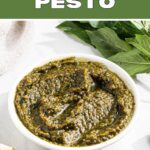



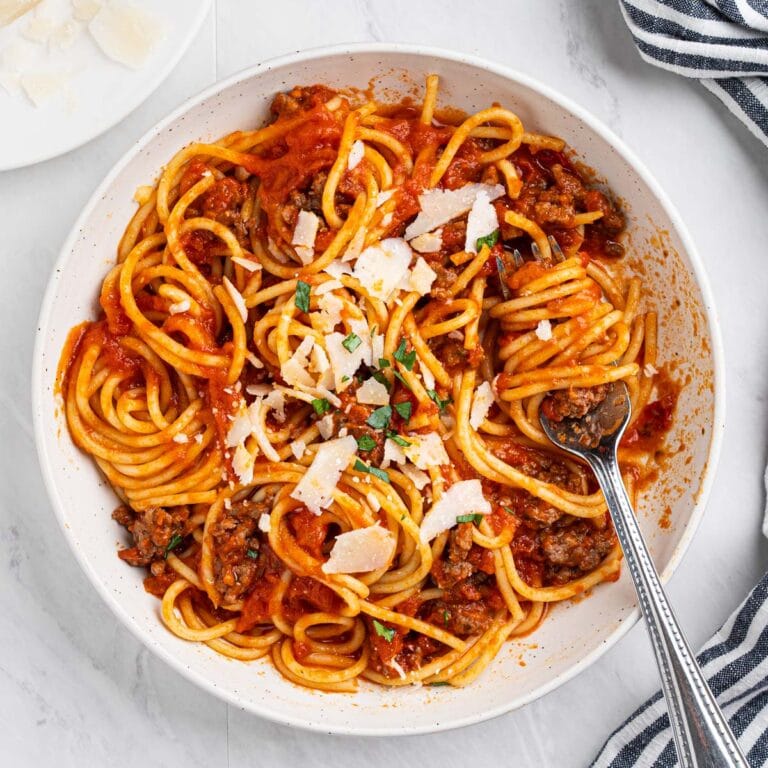
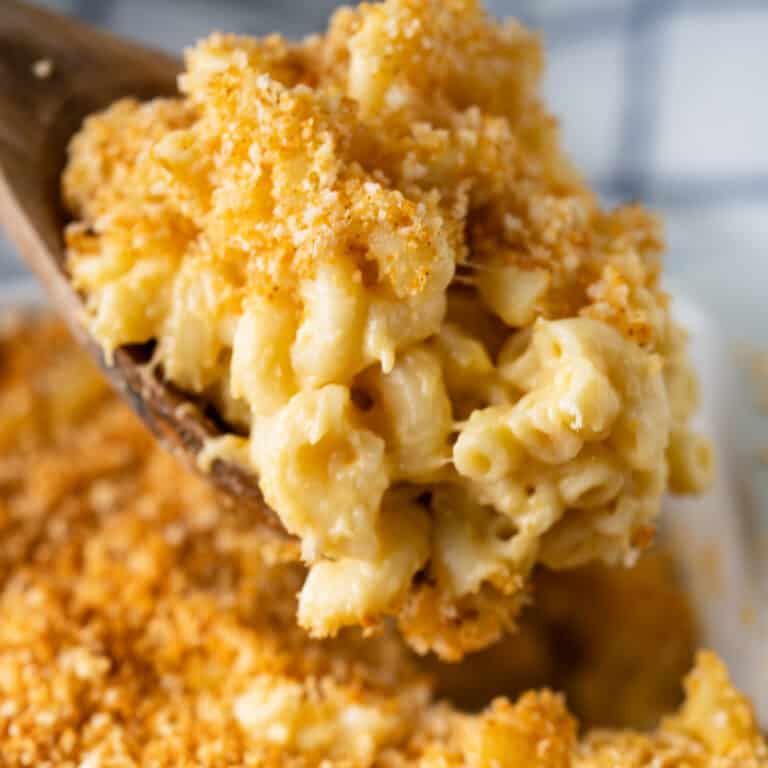



I love it so much, I have been using it for pasta, wraps, sandwiches, and paninis.
Just wow! I too always have extra basils and this recipe is a delicious way in using them up!